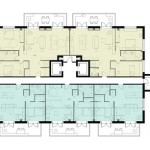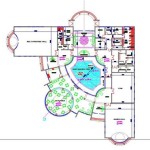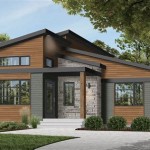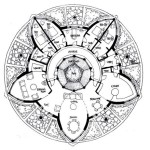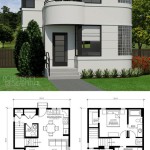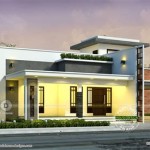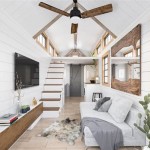Building Plans For House: Essential Aspects to Consider
When building a house, it's crucial to have a well-designed and detailed building plan that outlines every aspect of the construction process. A building plan serves as a blueprint for the project, ensuring that all necessary elements are included and that the house meets safety and building codes. Here are some essential aspects to consider when creating building plans for a house:
1. Site Analysis and Planning
Before designing the house, it's important to conduct a thorough analysis of the building site. This includes assessing the size, shape, and slope of the land, as well as identifying any potential obstacles or limitations. The site analysis provides valuable information for determining the house's placement and orientation, as well as for planning site infrastructure such as driveways and utilities.
2. Floor Plan and Room Layout
The floor plan determines the layout of the rooms, their size, and their relationship to each other. It's crucial to create a functional and efficient floor plan that meets the needs and preferences of the occupants. The plan should consider traffic flow, natural lighting, and the placement of windows and doors.
3. Architectural Design and Style
The architectural design of the house encompasses its overall appearance, including the exterior facade, roof shape, and any decorative elements. The architectural style should complement the surrounding environment and reflect the owner's aesthetic preferences. It's important to consider factors such as the materials used, the color scheme, and the balance between form and function.
4. Structural Design and Materials
The structural design ensures the stability and safety of the house. It involves selecting appropriate materials and detailing the structural components such as foundations, walls, roofs, and floors. The structural design must adhere to building codes and industry standards to withstand various loads and environmental conditions.
5. Mechanical, Electrical, and Plumbing (MEP) Systems
MEP systems are essential for the functionality and comfort of the house. They include the design and layout of electrical wiring, plumbing, heating, ventilation, and air conditioning (HVAC). These systems should be integrated seamlessly with the building's structure and architectural design to ensure efficient operation and occupant well-being.
6. Energy Efficiency and Sustainability
In today's environmentally conscious world, incorporating energy-efficient features into building plans is crucial. This involves selecting energy-efficient materials, optimizing the use of natural light, and implementing passive design strategies to reduce energy consumption. These measures not only contribute to environmental sustainability but also result in lower energy bills for the occupants.
7. Accessibility and Universal Design
Building plans should consider accessibility and universal design principles to ensure that the house is accessible and usable by people of all ages and abilities. This includes features such as ramps, wider doorways, and accessible bathrooms to accommodate individuals with disabilities or mobility challenges.
8. Cost Estimation and Budgeting
Building plans should include a detailed cost estimation and budget. This helps control construction costs and avoid unexpected expenses. The cost estimation should consider the materials, labor, permits, and other associated costs. It's crucial to allocate the budget wisely to ensure that the project remains within financial constraints.
9. Approval and Permitting
Once the building plans are finalized, they need to be submitted for approval to the local building department. The plans will be reviewed for compliance with building codes and regulations. Permits are required before construction can commence, and it's essential to obtain all necessary permits to ensure that the project is legally compliant.
10. Construction Documentation and Inspections
Detailed construction documentation is essential for guiding the construction process. This documentation includes detailed drawings, specifications, and schedules that provide instructions to contractors and ensure that the house is built according to the approved plans. Regular inspections are also necessary to verify that construction work adheres to the plans and building codes.
By considering these essential aspects, building plans for a house can be developed that are comprehensive, functional, and meet the needs of the occupants. It's advisable to work with qualified architects and engineers to ensure that the plans are professionally designed and comply with industry standards.
House Plans Home Floor Architecturalhouseplans Com

House Plans How To Design Your Home Plan

Easy To Build Houses And Floor Plans Houseplans Blog Com

Easy To Build Houses And Floor Plans Houseplans Blog Com

Small House Design 2024001 Pinoy Eplans Floor Plans

Easy Home Building Floor Plan Cad Pro

Home Plan Berkeley Square Sater Design Collection

Affordable House Plans Our Est To Build Blog Homeplans Com

House Plan Vienna Sater Design Collection

Easy To Build Houses And Floor Plans Houseplans Blog Com

